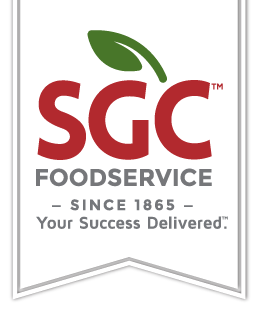Your menu is where your food gives its first impression! Think of it as a blind date and put your best food forward. Having a lengthy menu with many dishes may seem like a great idea, but your guests can easily get overwhelmed by the number of options they've been given. Having a minimal menu allows you to operate your restaurant at a lower capacity while still providing popular menu items and driving sales. A minimal menu is more condensed and a more profitable version of your menu that you can create with a smaller list of ingredients. SGC operator tip: cross utilize ingredients in multiple dishes to cut down on costs
Downsizing your menu can aid in cultivating better focus and overall success in your restaurant. Restaurant staff will be able to serve your guests better, and guests will have a quick and simple ordering experience.
Customer Satisfaction
A lengthy menu can be complicated for your guests to read and decide what they want to order. When studying long menus with many options, customers can experience something called "decision fatigue." Guests can become tired of deciding between the many options they've been presented with, and ultimately, they will end up feeling unhappy about all of them. This can cost you a customer if they're too overwhelmed by your menu and decide to dine elsewhere.
Simplifying your menu will also make order customizations simpler. Many restaurants respond to diet restrictions by creating a more extensive menu. However, you can simply offer more customization options for the fewer dishes you offer. This opens the ability to suit a variety of diets like those with gluten intolerance, vegan, paleo, and low-carb diets. A smaller menu means you will specialize in fewer dishes, but more work and love will be put into these dishes you've perfected. This means your customers are guaranteed to enjoy their meal and have a memorable experience to make them want to return to your restaurant.
Kitchen Efficiency
A condensed menu aids in streamlining and improving the ordering process and service, but it can also help create a more efficient and cost-effective kitchen. Your restaurant will be able to focus on what it specializes in, which means that you'll be able to improve the overall customer experience. Having a minimal menu will emphasize your chef's strengths. If your chef specializes in cured meats, their talents are probably not best utilized in creating a vegan item that you added to the menu in an attempt to please your customers.
Having a condensed menu will also help you reduce food waste. With fewer dishes on your menu, it will be easier to keep track of how much of each ingredient you'll need, so you'll be less likely to wind up with an excess. This means you'll throw away much less food and make your restaurant more sustainable and environmentally friendly, while also being more profitable.
Better Aesthetic
Another benefit to having a smaller menu is that you and your customers will gain clarity on your restaurant concept. Your menu will be a more accurate and pure reflection of your restaurant's concept by removing unnecessary, extraneous dishes. Giving your menu a minimal and straightforward design will create an easy-to-read layout and an overall more appealing aesthetic.
Typically, when you go to a high-end restaurant, their menu isn't a mile long. A long menu can seem dingy and play into your customers' decision fatigue. A smaller menu will make each dish stand out while simultaneously giving your restaurant a more high-end feel.
How to Minimize
When considering the minimization of your menu, it's essential to ask your employees their opinion. Your front-of-house team already knows which menu items are your most popular and can work with you to create the perfect menu that highlights your most popular and profitable items. Train your staff on the new menu design and take their suggestions into consideration.
Minimizing your menu can be a time-consuming and challenging task. Here are some tips to get you started:
-
Take your time: Figure out how often you'll have the availability to sit down and shuffle your menu items around. This takes some time, but this task could pay off in the long run. Doing this seasonally or quarterly is a great idea, but even doing so twice a year can help drive revenue.
-
Measure popularity: Figure out which of your items your customers love the most. Which menu items are ordered most frequently, and which ones can you boot from your menu?
-
Calculate profitability: If your POS system doesn't calculate food costs for menu items, you can figure this out yourself. List all the ingredients involved in specific dishes and which ingredients are repeated. Calculate the cost of each ingredient, delivery fees, interest, etc. You will want to stick with your star items (high profit, high popularity).
Reducing your menu items can significantly impact your restaurant's profits. A smaller but stronger menu can result in more efficient service and an overall improved customer experience.
Cut Portion Sizes
A large portion of consumers are prepared to see less on their plate for the same price. Recent studies have shown that 74% of customers expect that portion sizes will decrease while maintaining current prices. Don't be afraid to cut down on those portions. You can easily combat the perception of smaller portion sizes by decreasing the size of your physical plates. Be prepared that there still may be some flack from consumers as portion sizes shrink. Make sure you are training your staff to tackle these questions and arm them with appropriate responses.
Themed Menus
Another fresh and fun option for your restaurant to offer are seasonal, themed menus. This is a great way for your restaurant to keep up with industry trends while keeping things interesting for your guests and staff. Seasonal, themed menus can be a a great driver for sales by creating a sense of urgency for your fun, limited-time menu items that match up with the current holiday or season. For example, during the summer season, you can add fresh salads, unique salsa and dips, and other refreshing dishes to combat the heat.

